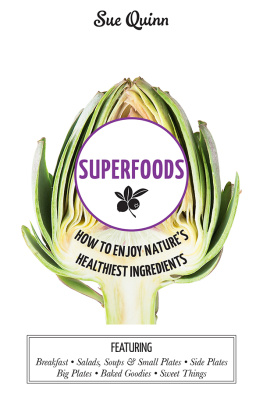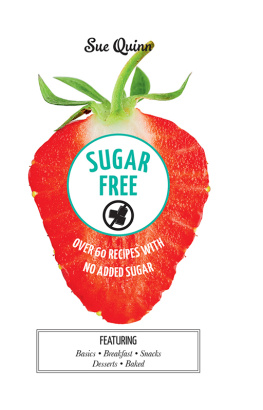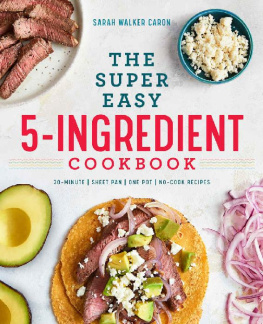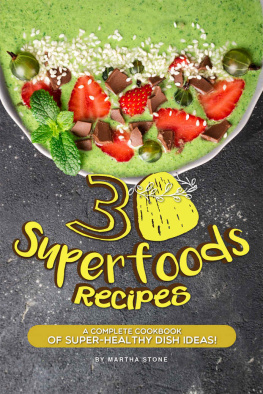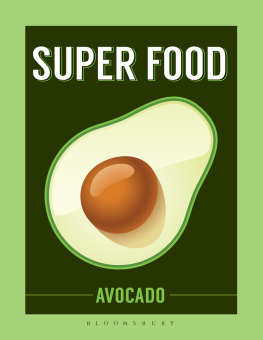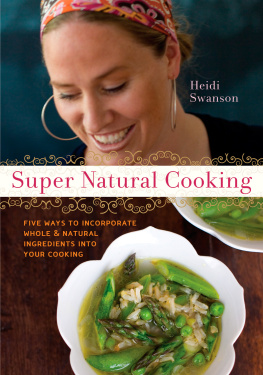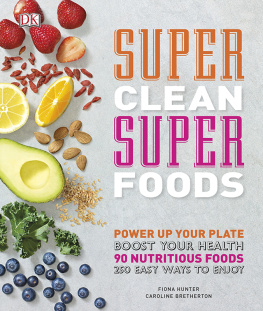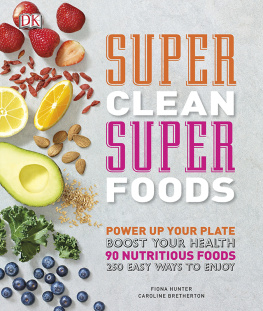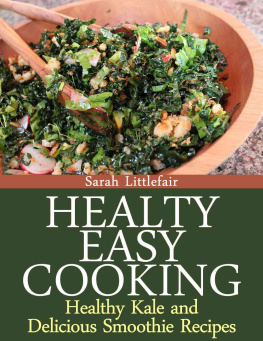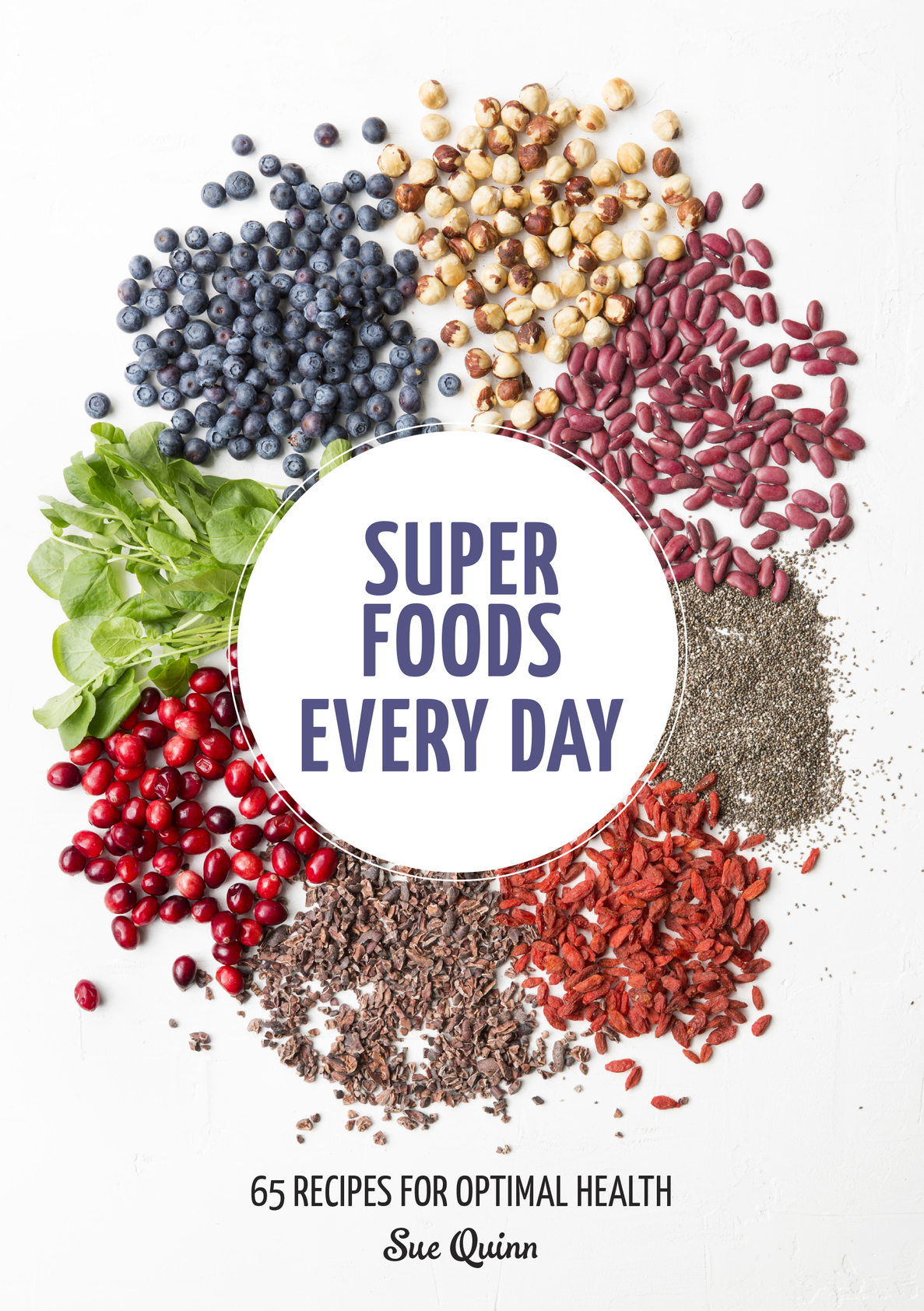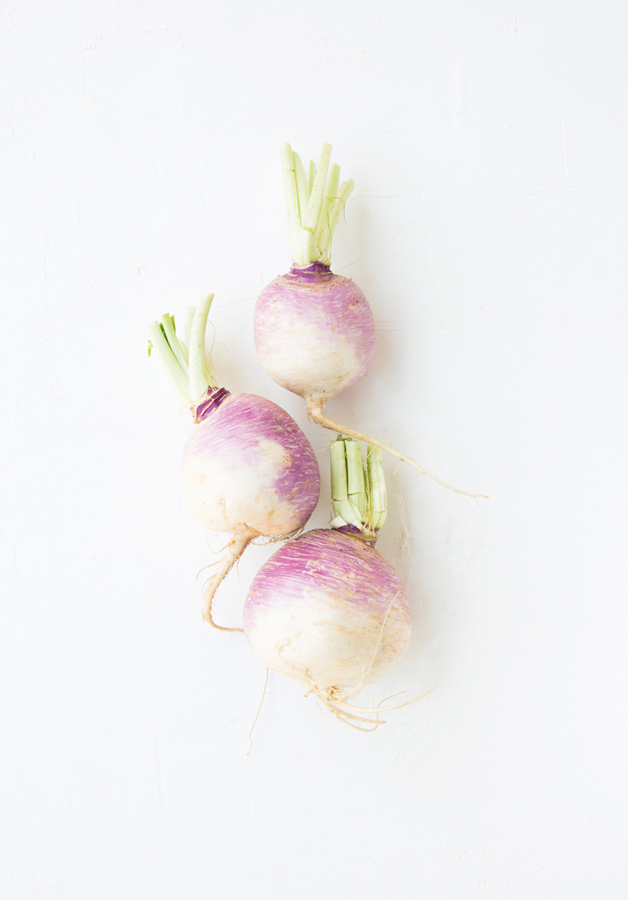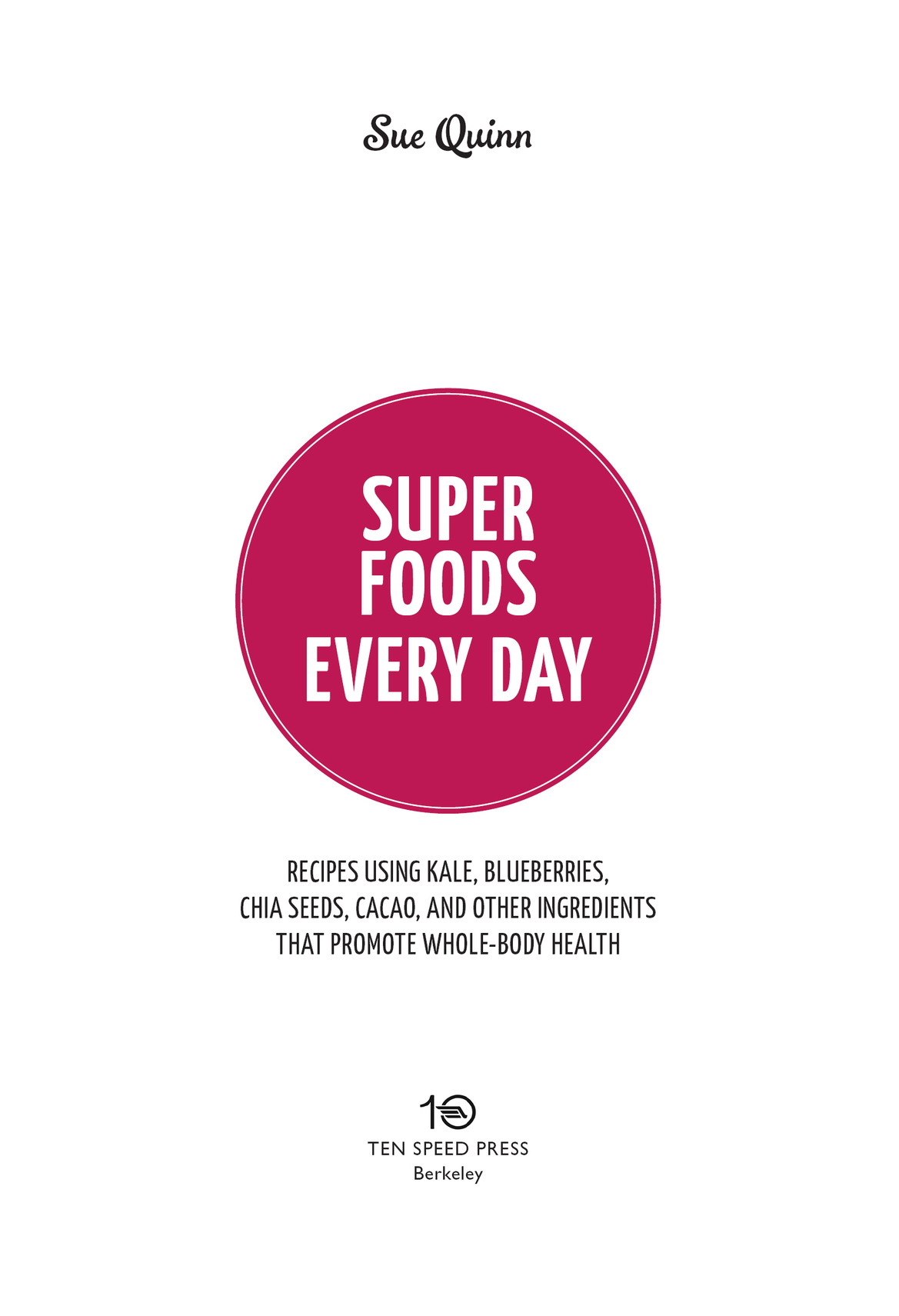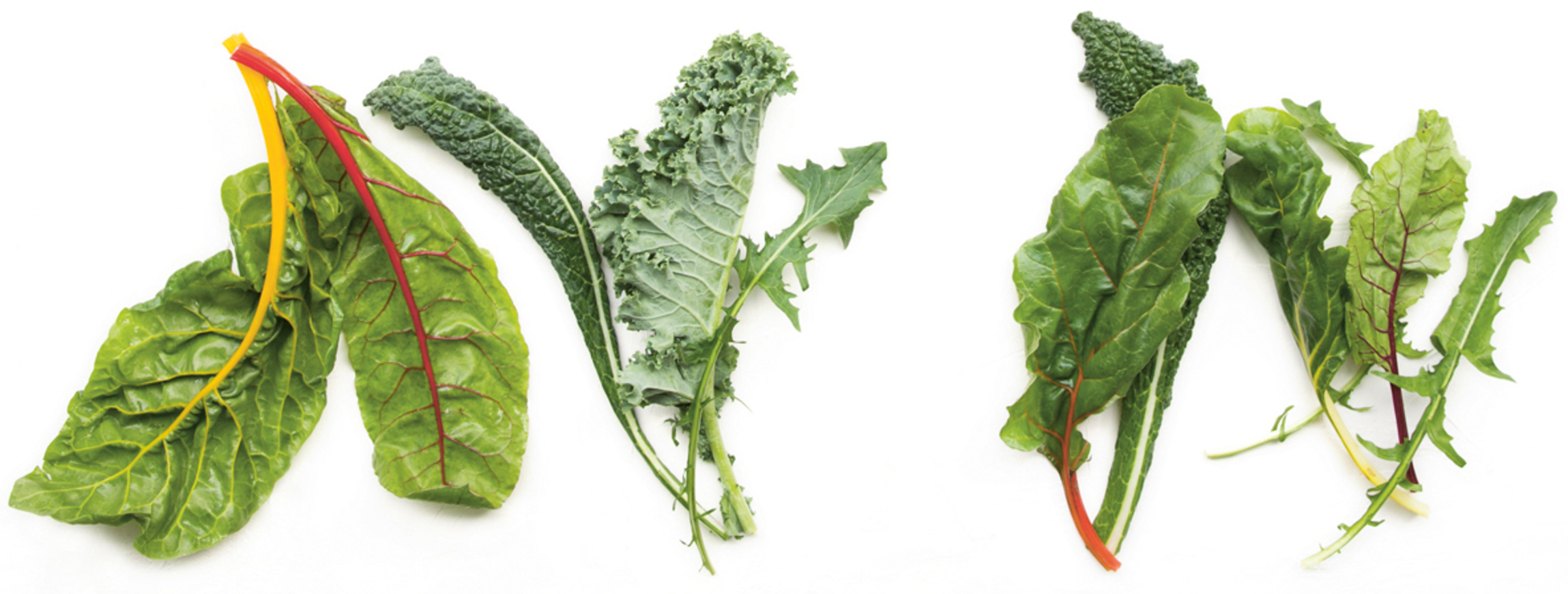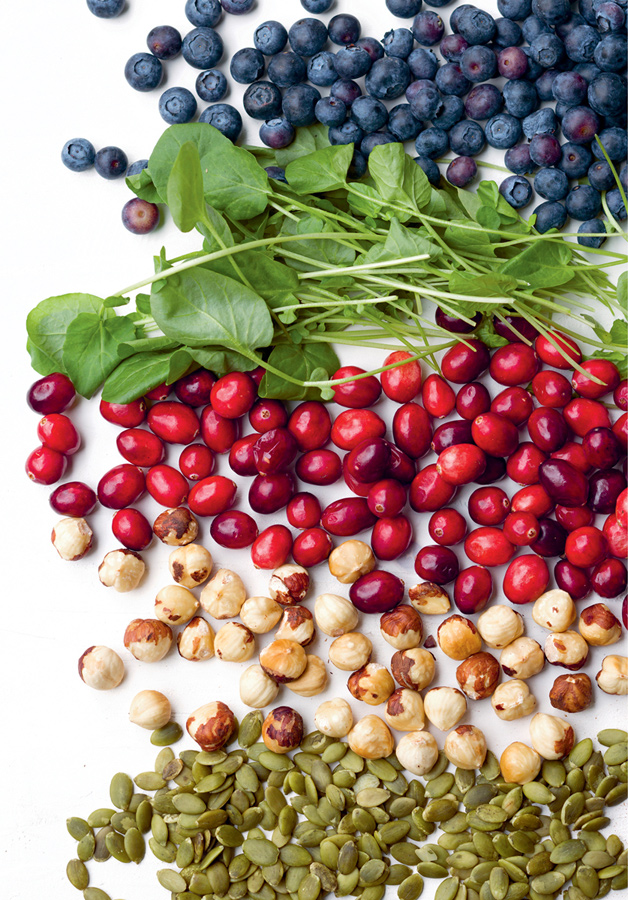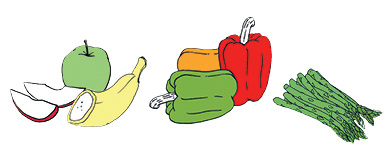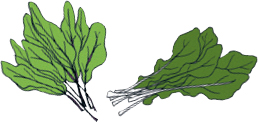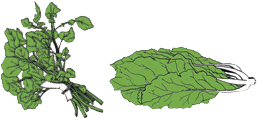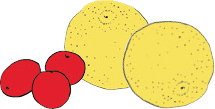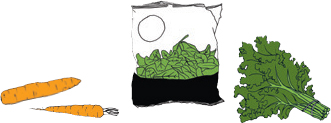All rights reserved.
Published in the United States by Ten Speed Press, an imprint of the Crown Publishing Group, a division of Penguin Random House LLC, New York.
Ten Speed Press and the Ten Speed Press colophon are registered trademarks of Penguin Random House LLC.
Library of Congress Cataloging-in-Publication Data is on file with the publisher.
WHAT IS A SUPER FOOD?
Super food is a term often exploited by food manufacturers to make products seem more nutritious than they actually are. Sometimes these products lack the scientific evidence to support their alleged health benefits and are no more than fads. This is a shame. Marketing hype aside, there is hard scientific research to show that some foods contain exceptional levels of nutrients that promote good health and protect the human body against disease. These are the super foods I have focused on in this book.
Finding a standard measure of what constitutes a super food is, however, complicated. A number of rating systems have been developed around the world that rank foods according to their nutrient densitythe measure of nutrients per calorie. The problem is that these systems are not consistent. For example, some use different sets of essential nutrients as the basis for the rating. Whats more, nutrient density is not the only important factor. For example, there are thousands of phytochemicals that appear to have the potential to protect against a range of diseases, but these are not included in nutrient density measures because they have not been established as essential for bodily function.
After researching various rating systems, I have devised my own list of powerhouse foods (see ) that contain exceptionally high levels of vitamins, phytochemicals, and other nutrients that are strongly associated with good health and reduced risk of chronic disease. The super foods that appear on this list are set in boldface in each recipes ingredients list so that they can be identified easily. Some ingredients found in the recipessuch as nut milks, wakame, tahini, and misoare also set in boldface because they are forms of super foods.
The list is by no means exhaustive, but provides a cross-section of super foods in different food groups to help you load your diet with as much goodness as possible.
SUPER FOODS 101
ANTIOXIDANTS
Fruits, vegetables, and grains are the richest sources.
Chemicals that block the activity of free radicals.
Protect cells from damage.
CAROTENOIDS
Carotenoids give carrots, squash, and other fruits and vegetables their orange color.
A group of phytochemicals that includes carotene, beta-carotene, and lycopene.
Powerful antioxidants.
FLAVONOIDS
Found in berries, tree fruits, nuts, beans, and vegetables, among others.
A large group of phytochemicals.
Linked to longevity and reduced risk of heart disease. Powerful antioxidants.
FOLATE
Particularly high levels in dark green leafy vegetables.
A type of vitamin B , also known as folic acid.
Vital for growth.
FREE RADICALS
Formed naturally in the body, also in the environment: for example cigarette smoke and pollution.
Reactive chemicals that have the potential to damage cells.
Can lead to age-related conditions like cancer, diabetes, and heart disease.
Knowing the common nutritional terms listed here will make it easier to understand the benefits of super foods.
GLUCOSINOLATES
Found in cruciferous vegetables like arugula, bok choy, cabbage, kale, and watercress.
Sulfur -containing chemicals.
Thought to inhibit the development of some cancers.
LYCOP ENES
Found in fruits and vegetables such as tomatoes and pink grapefruit.
A group of phytochemicals that belong to the family of carotenoids.
Powerful antioxidants.
PHYTOCHEMICALS
Nonessential plant-based nutrients with disease protective and preventative properties.
Certain types referred to as antioxidants, flavonoids, carotenoids, and polyphenols.
May protect against cancer; also linked to lower blood pressure, improved vision, and lower cholesterol.
VITAMIN A
A broad group of nutrients that includes retinoids (from animals) and carotenoids (from plants).
In this book, vitamin A refers to all the combined forms contained in a food.


